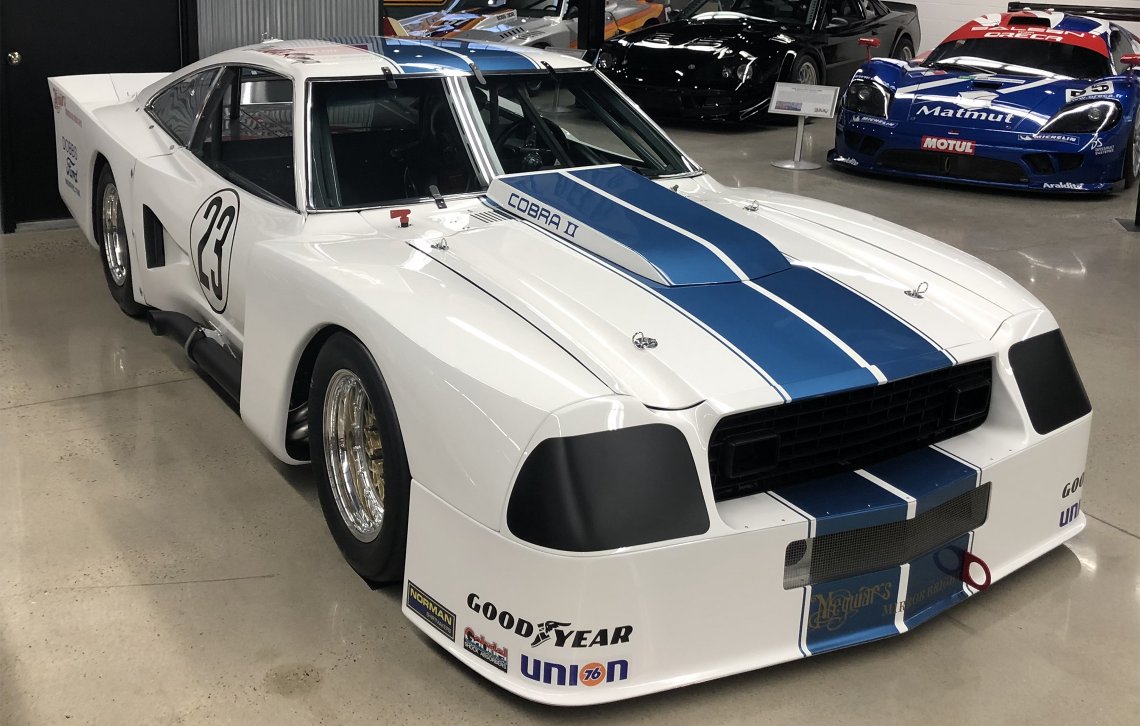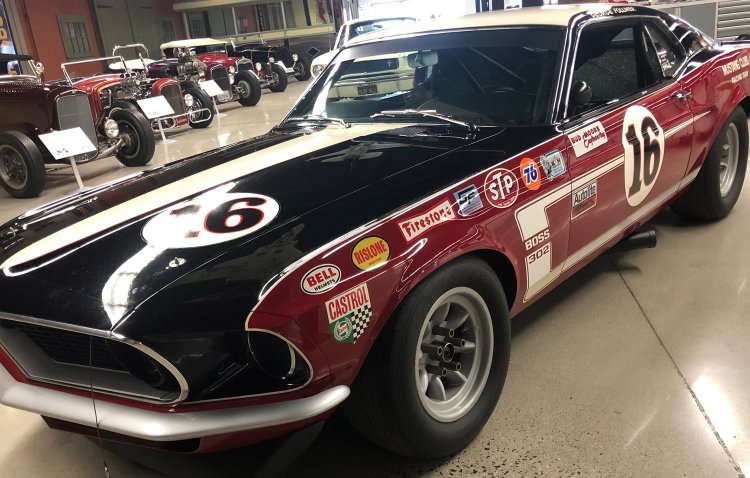
IMSA GT, All American
This Mustang Cobra II was conceived and raced by Charlie Kemp, an experienced racer who had competed in the early SCCA Trans-Am series and then in the Can-Am from 1970 through 1973. He was clocked at 222 mph at Riverside driving a Porsche 917-10 in 1973. In 1975, IMSA introduced a new category, All-American GT, designed to add some domestic competition into their GT road-racing program. With Chevrolet already in with their tube-chassis DeKon Monzas, Kemp saw an opportunity to build a similar but better Ford-powered design for the 1976 season. His car’s tube chassis was designed by the legendary Bob Riley, and it used a Ford “Cleveland” 351 cubic-inch V-8 for power. Despite using body panels made from bucks taken off a production Mustang II and using a production-car roof panel and windshield, the car was undeniably radical in its appearance and caused a stir when rolled out of its trailer for the first time in early 1976 at the Daytona 24-Hour. For five seasons, Kemp was continuously at odds with IMSA, who argued that the design of the car pushed the bounds of rules interpretation. With some second and third place finishes to its credit, the car never actually won a race, but today it is recognized as the lone example of Ford “connective tissue” between the early Trans-Am period of 1966-1970 and the imminent onslaught of the tube-chassis revolution starting in 1981.







